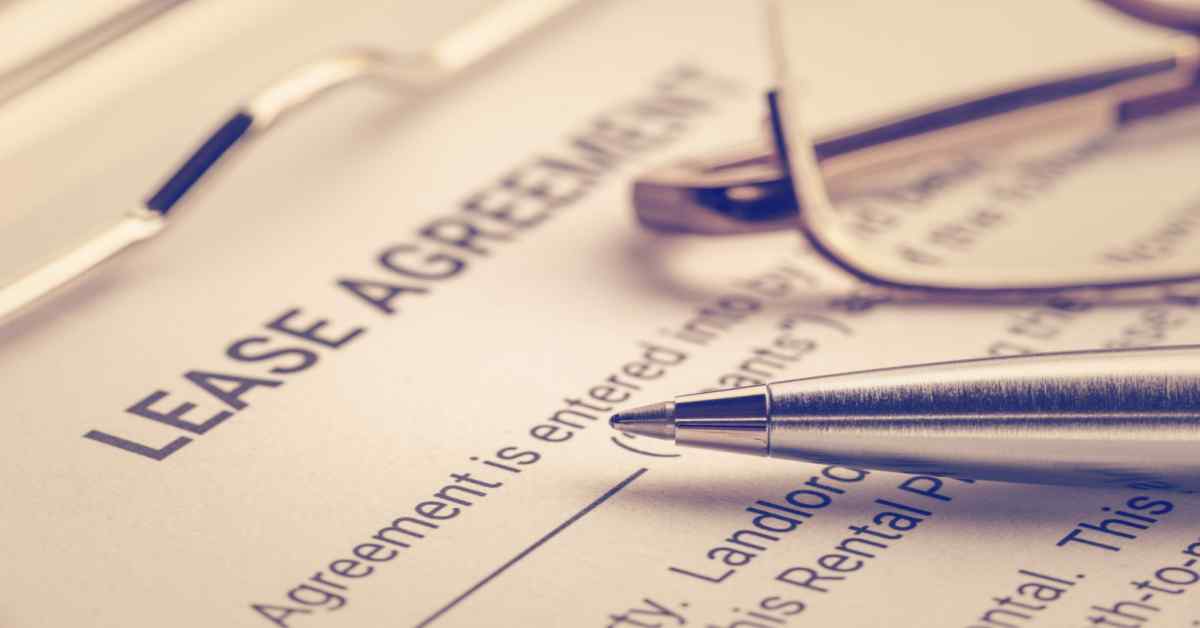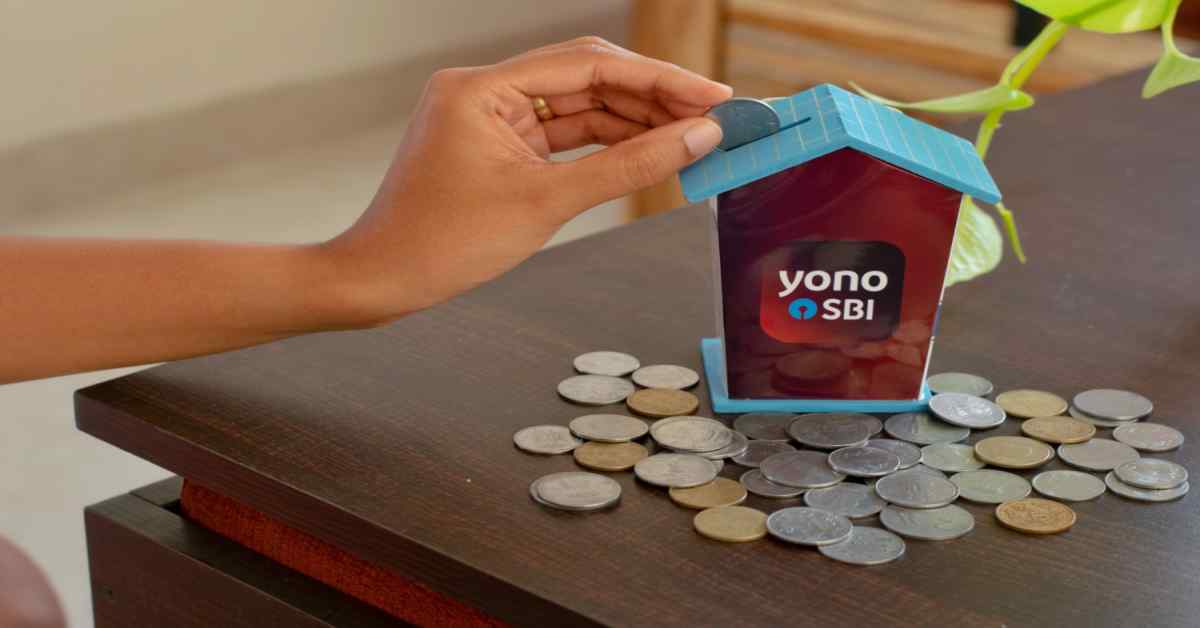Table of Contents
Quality Service Guarantee Or Painting Free

Get a rental agreement with doorstep delivery

Find the BEST deals and get unbelievable DISCOUNTS directly from builders!

5-Star rated painters, premium paints and services at the BEST PRICES!
Loved what you read? Share it with others!


Submit the Form to Unlock the Best Deals Today
Help us assist you better
Check Your Eligibility Instantly

Experience The NoBrokerHood Difference!
Set up a demo for the entire community
What is Lease Rental Discounting (LRD)? Eligibility and Application Process Explained
Table of Contents
Lease Rental Discounting (LRD) is a loan against a property's rent receivables. It allows property owners or tenants to unlock their property's or rental lease's financial potential by providing them with funds in exchange for the rent receivables. The LRD loan amount depends on the monthly rental income generated by the property and the borrower's repayment capacity. With LRD loans, borrowers can get a higher loan amount than traditional ones, making it an attractive financing option.
Are you a property owner looking for financial flexibility? Or a tenant who wants to monetize their rent deposit? This blog on Lease Rental Discounting (LRD) is for you. Discover how LRD loans work, eligibility requirements, maximum lease periods, etc. Read on to learn how to unlock your property's or rental lease's financial potential.
What is LRD? LRD Full Form, LRD Meaning, Eligibility and More:
LRD full form is Lease Rental Discounting (LRD), a loan against a property's rent receivables. It allows property owners or tenants to unlock their property's or rental lease's financial potential by providing them with funds in exchange for the rent receivables.
Quality Service Guarantee Or Painting Free

Get a rental agreement with doorstep delivery

Find the BEST deals and get unbelievable DISCOUNTS directly from builders!

5-Star rated painters, premium paints and services at the BEST PRICES!
The LRD loan amount depends on the property's monthly rental income and the borrower's repayment capacity. Borrowers can get a higher loan amount with LRD loans than traditional loans, making them an attractive financing option.
LRD loans can be used for various purposes, such as expanding a business, renovating a property, or funding higher education.
Lease Rental Discounting Example
Suppose you own a commercial building and have leased a significant portion of it to a company for a long-term contract.
- Lease Agreement: You have leased your property to a tenant for 10 years, and the tenant is paying a rent of ₹2 lakh per month.
- Loan Amount: You approach a bank for a loan based on this lease agreement. The bank offers you a loan using the future rental income as security.
Now, the bank calculates your loan amount based on:
- Loan-to-Value (LTV) Ratio: The bank might loan you up to 70-75% of the total rent you will earn over the lease period. If the rent is ₹2 lakh per month for 10 years, your total rental income over the lease period will be ₹2.4 crore (₹2 lakh * 12 months * 10 years).
- Loan Amount: Based on a 75% LTV, the loan amount could be around ₹1.8 crore (75% of ₹2.4 crore).
- Repayment: The rent collected from the tenant is directly paid to the bank, and a portion of this amount is used to service the loan.
Thus, the property owner gets liquidity today based on future rental income, while the bank secures repayment through future rent payments. This method is especially useful for property owners with steady rental agreements in place but who need cash for business expansion or other purposes.
What are the Lease Rental Discounting eligibility criteria?
Lease rental discounting loans offer businesses a way to leverage future rental income for immediate capital. This section explores the eligibility criteria for such loans, helping companies understand how to qualify and unlock this funding option. Businesses can access funds based on their lease agreements by meeting specific requirements. Now, let's outline the eligibility criteria in steps:
- Property and ownership:
- Property located in metro, urban, or semi-urban areas
- Applicant must be the legal owner of the property
- Tenant profile:
- Property rented to Public Sector Undertakings, Government, Semi-government organizations, Reputed corporations, Banks, Financial Institutions, or Multi-national Companies
- Lease agreement:
- Valid, ongoing commercial lease agreement
- Consistent rental payment history
- Future rent receivables available as collateral
- Documentation and compliance:
- Complete lease documentation and proof of ownership
- Property compliant with local regulations and standards
- Good credit history of the property owner
- Loan specifics:
- A clear purpose for the loan funds
- Loan amount based on future rent receivables
- Terms and conditions as per lender's requirements
What are Lease Rental Discounting Charges
Lease Rental Discounting (LRD) is a financing method in which a property owner borrows against future rental income. LRD charges are fees associated with this process, including interest and processing costs. This allows property owners to access immediate funds while using expected rent as collateral, but it comes with various charges.
Now, here's a listicle of standard LRD charges:
- Interest rate charges
- Processing fees
- Documentation charges
- Legal fees
- Valuation charges
- Insurance premiums
Documents required for LRD
Lease Rental Discounting requires comprehensive documents to ensure a smooth application process. We've compiled a list of essential paperwork you'll need to provide. These documents help us verify your identity, income, and property details. Gathering these in advance can significantly speed up your LRD application. Let's explore the specific documents required for each category.
- Identity proof:
- PAN card
- Voter ID card
- Aadhaar card
- Driving license
- Age proof:
- PAN card
- Passport
- Address proof:
- Utility bill
- Passport
- Driving license
- Income proof:
- Bank statements
- Income Tax Returns (ITR)
- Balance sheets
- Profit and loss accounts
- Property documents:
- Lease agreements
- Title documents
- Approved plans
- Valuation reports
- Sale deeds
- Title Search Reports
Gathering these documents beforehand can significantly expedite the LRD application process. Applicants should ensure all paperwork is current and accurately reflects their financial and property status.
How to Apply for Lease Rental Discounting
Applying for Lease Rental Discounting is straightforward when you know the steps involved. We're here to guide you through each stage, ensuring you understand the requirements and can submit a strong application. By following our advice, you'll be well-prepared to secure your LRD loan efficiently:
- Select a Bank:
- Research various banks and financial institutions offering LRD loans
- Compare terms, interest rates, and customer service
- Choose the institution that best aligns with your needs
- Understand the Requirements:
- Familiarize yourself with specific criteria for LRD loans
- Note minimum rental income requirements
- Check eligible property types • Review acceptable tenant profiles
- Gather Necessary Documents:
- Proof of property ownership
- Lease agreement with the tenant
- Evidence of consistent rental income
- Bank statements
- Other relevant financial documents
- Online Application Process:
- Visit the chosen bank's website
- Locate the LRD loan application form
- Fill out the form with accurate information
- Submit the completed application along with the required documents
- Track Your Application:
- Use the bank's online portal to monitor application status
- Contact customer service for updates if needed
- Respond promptly to any additional information requests
Following these steps and maintaining open communication with the lender can help ensure a smooth and efficient LRD application process. Applicants should be prepared for potential follow-up questions or document requests as the bank reviews their application.
Top Tips for Small Business Owners Seeking LRD Loans
- Before applying, you should understand the terms and conditions of the loan, including the interest rate, repayment schedule, and other fees associated with it.
- Have a clear plan for using the funds. Be specific about how the loan will help you grow your business.
- Prepare a solid business plan. Lenders want to see that you have a clear vision for your business and a plan to achieve your goals.
- Shop around for lenders. Compare different lenders' interest rates, terms, and fees to find the best option for your business.
- Work with a financial advisor or accountant. They can help you navigate the loan application process and ensure you make the right financial decisions for your business.
Maximizing Gains: Benefits of Lease Rental Discounting Loans for Property Owners
Lease Rental Discounting (LRD) loans can be a beneficial financing option for property owners looking for liquidity without selling their properties. Here are some benefits of LRD loans:
- Easy access to funds: LRD loans allow property owners to monetize their rental income streams and access funds quickly. With LRD loans, the property owner can get a loan against the future rent receivables from their property.
- Lower interest rates: LRD loans are secured loans, which means that their interest rates are generally lower than those of unsecured loans. The interest rates on LRD loans are also lower than those of other loans available in the market.
- Longer loan tenures: LRD loans usually have longer loan tenures, meaning the borrower has more time to repay the loan. The repayment period for LRD loans can range from 5 to 15 years.
- Flexibility in end-use: Property owners can use the funds raised through LRD loans for various purposes, such as expansion of business, acquisition of new properties, renovation of existing properties, and more.
- Tax benefits: Property owners can also benefit from tax benefits on the interest paid on LRD loans. The interest paid on LRD loans can be claimed as a deduction from the rental income earned from the property.
Breaking Down the Differences: LRD Loans vs. Traditional Loans in India
LRD loans, or Lease Rental Discounting loans, are a type of loan that is specifically designed for property owners who earn rental income from their properties.
In India, traditional loans are typically offered based on the borrower's creditworthiness, income, and collateral. LRD loans, on the other hand, are primarily provided based on the rental income generated by the property. The loan amount is calculated based on the rental income and the property's value.
The repayment terms of LRD loans are also structured differently from traditional loans. Lease rental discounting loans typically have longer repayment tenures, up to 15 years, and the repayment is made through the rental income generated by the property.
Another significant difference between LRD and traditional loans in India is the eligibility criteria. LRD loans are primarily offered to individuals with commercial properties that generate rental income. In contrast, traditional loans in India can be availed by individuals for a variety of purposes, such as home loans, personal loans, or business loans.
LRD loans are an attractive financing option for property owners who want to leverage the rental income generated by their properties to obtain long-term funding. Unlike traditional loans, LRD loans are tailored to meet the unique financial needs of property owners who generate rental income.
LRD Loans for Rental Property: Weighing the Pros and Cons
LRD loans allow property owners to leverage rental income for financing, offering liquidity but with risks like interest rates and long-term repayment. Weigh the pros and cons carefully before deciding.
Rental Property Owners Rejoice: The Advantages of LRD Loans
- Lower interest rates: LRD loans typically come with lower rates than traditional ones, making them more affordable for property owners.
- Higher loan amounts: LRD loans allow property owners to borrow up to 70-80% of the property's market value, which is higher than traditional loans.
- Longer loan tenures: LRD loans have longer tenures, typically up to 15 years, which means that property owners have more time to repay the loan.
- Quick disbursal: LRD loans have a quick disbursal process, which means that property owners can get the loan amount faster.
Navigating Risk: What to Know About LRD Loan Risks
- Default risk: If the tenant fails to pay rent or if the tenant vacates the property, the property owner may not be able to repay the loan, resulting in default.
- Market fluctuations: If the real estate market experiences a downturn, the property value may decrease, resulting in the owner owing more than the property is worth.
- Loan-to-value ratio risk: If the property owner has borrowed a high amount, the loan-to-value ratio may become imbalanced, which can be risky in a market downturn.
Safe and Secure: How to Mitigate Risks with LRD Loans?
- Proper tenant screening: Property owners should conduct proper screening of tenants to ensure they have a good payment history and are less likely to default on rent payments.
- Diversification of property portfolio: Property owners can mitigate risk by diversifying their property portfolio, reducing the impact of a single property defaulting.
- Regular property valuation: Regular property valuation can help property owners keep track of their property's market value, reducing the risk of the loan-to-value ratio becoming imbalanced.
Exploring Financing Options for Rental Property
Various financing options are available for rental property owners, and each comes with its own advantages and disadvantages. Some of the most common financing options are:
- Traditional Mortgage Loans: Standard loans are available through banks and other financial institutions. They usually require a down payment, and the interest rates and repayment terms are fixed.
- Hard Money Loans: These are short-term loans usually offered by private lenders. They have higher interest rates and fees than traditional loans, but they are easier to qualify.
- Home Equity Loans: These loans are taken out against the equity in the rental property. The interest rates are usually lower than other types of loans, and the repayment terms can be flexible.
- Lines of Credit: Revolving credit accounts allow rental property owners to borrow money as needed. The interest rates are typically variable, and the repayment terms are flexible.
Rent Deposit Loan vs. LRD Loans: Understanding the Key Differences
LRD (Lease Rental Discounting) loans and rent deposit loans are both financing types available to rental property owners, but they differ in a few key ways.
LRD loans are based on the rental income that the property generates. The lender analyzes the rental income and offers a loan amount based on a percentage of that income. The repayment terms are usually based on the rental income, which secures the loan amount.
Rent deposit loans, on the other hand, are loans taken out against the tenant's security deposit. The loan amount is usually limited to a percentage of the security deposit, and the repayment terms are usually based on the tenant's lease agreement.
Crunching the Numbers: How to Calculate EMI on LRD Loans
The EMI (Equated Monthly Installment) on LRD loans can be calculated using the following formula:
EMI = [P x R x (1+R)^N]/[(1+R)^N-1]
P is the principal loan amount, R is the monthly interest rate, and N is the number of months in the loan term.
For example, if a rental property owner takes out an LRD loan of 50 lakhs with an interest rate of 8% for a loan term of 10 years (120 months), the EMI can be calculated as follows:
EMI = [50,00,000 x 0.08 x (1+0.08)^120]/[(1+0.08)^120-1]
EMI = Rs. 61,764
The rental income the property generates can be used to repay the EMI, and the loan amount can be paid off in full at the end of the loan term.
LRD Loan Amount: What is The Maximum Limit?
The LRD loan amount depends on the monthly rental income generated by the property and the borrower's repayment capacity. It can range from 60% to 80% of the net present value of the future rentals receivable. Borrowers can use an LRD calculator to estimate the loan amount they can avail based on the rental income generated by their property.
Maximizing Profit with Extended Lease Periods on LRD Loans
The minimum and maximum loan amounts under LRD loans vary depending on the lender and the property's rental income. Generally, the loan amount can range from a few lakhs to several crores. Some lenders may also require a minimum loan amount, such as 10 lakhs or 20 lakhs.
Maximum Lease Period for Lease Rental Discounting Loans in India
The maximum lease period for LRD loans in India is typically 9 years, the maximum period of a lease agreement under the Transfer of Property Act of 1882. However, some lenders may offer a longer lease period depending on their internal policies.
EMI vs Rental Payments: Which is Better for Lease Rental Discounting Loans?
Unlike traditional loans, which require the borrower to repay the loan amount in EMIs, LRD loans require the borrower to repay the loan amount in monthly rental payments. This makes them an attractive financing option for borrowers as they do not need to pay EMIs along with the interest rate charged on the loan amount.
Small Business Growth with LRD Loans: Benefits and Considerations
LRD loans can fuel small business growth by offering quick access to funds from rental income, but factors like interest rates and loan tenure should be carefully considered before proceeding.
Unlocking the Value of Rental Income: Leveraging Rent Receivables for LRD Loans
Leveraging rent receivables is one of the significant advantages of LRD loans. Property rental income can be utilized as collateral to secure the loan. As a result, LRD loans can be obtained without any additional collateral. This benefits property owners who may not have other assets to offer as security for loans.
Additionally, using rent receivables as collateral helps property owners to maintain their property ownership while obtaining financing. This allows them to continue earning rental income and grow their business.
From Idea to Reality: How Lease Rental Discounting Loans Can Help Small Businesses
Small businesses require capital to grow and expand their operations. LRD loans offer an alternative financing option to traditional bank loans. Small business owners can use the funds to purchase new equipment, hire additional staff, or expand their business.
With LRD loans, small business owners can use their rental property to obtain financing without risking their personal assets.
In conclusion, leveraging rent receivables for Lease Rental Discounting loans is a promising financing option for rental property owners and small business owners. The advantages include flexible repayment terms, lower interest rates, and larger amounts of borrowing. However, risks associated with LRD loans must be carefully considered and mitigated to avoid default. To ensure success, it is important to understand the different types of financing available and seek expert guidance when needed.
For rental property owners, NoBroker's technology and services can provide seamless rent collection and payment processing, making it easier to leverage rent receivables for LRD loans. Small business owners can also benefit from NoBroker's extensive network of lenders and expert advisors, who can help navigate the complex world of LRD loans.
Remember to stay informed and proactively manage risks as you consider your financing options. With the right approach and support, LRD loans can be valuable for growing your rental property or small business. Contact NoBroker Loan Services today to explore your options and get started.

FAQ's About Lease Rental Discounting
Ans: The maximum loan amount available for LRD loans varies depending on the lender and the property's rental income. Generally, lenders offer LRD loans up to 80% of the property's rental income.
Ans: Small businesses seeking LRD loans must have a minimum annual rental income of Rs. 1 lakh and a lease agreement of at least three years. Lenders may also require businesses to have a good credit score and financial stability.
Ans: Leveraging rent receivables for LRD loans involves pledging the rental income of a property as collateral for the loan. The lender will evaluate the rental income and offer a loan amount based on it. The borrower must repay the loan using rental income.
Ans: No, LRD loans are designed for rental income-generating commercial properties such as shops, offices, and warehouses.
Ans: NoBroker offers services to assist small businesses with LRD loans, including personalized loan assistance, competitive interest rates, and hassle-free documentation. Additionally, NoBroker's technology-driven platform can help companies to identify the right lender and loan product to suit their needs.
Loved what you read? Share it with others!
Most Viewed Articles

ICICI Home Loan Interest Rates - Updated in October 2024
September 30, 2024
19891+ views

Understanding Home Loan Tenure and Why It's Important
August 22, 2022
15458+ views

SBI Home Loan Interest Rates - Updated in October 2024
September 30, 2024
10577+ views

Home Loan Interest Rates for All Banks in October 2024
September 30, 2024
10135+ views

Home Loan Top-Up: Interest Rate, Eligibility and Process
November 22, 2021
9404+ views
Recent blogs in
What is Lease Rental Discounting (LRD)? Eligibility and Application Process Explained
October 17, 2024 by Siri Hegde K
3 Crore Home Loan EMI With Calculator And Interest Rates 2024
October 16, 2024 by Priyanka Saha
Principal Amount of Home Loan: Meaning and Calculation with Examples in 2024
October 16, 2024 by CA Akshay Attal
15 Lakh Home Loan EMI With Calculator and Interest Rates 2024
October 16, 2024 by Priyanka Saha



Join the conversation!